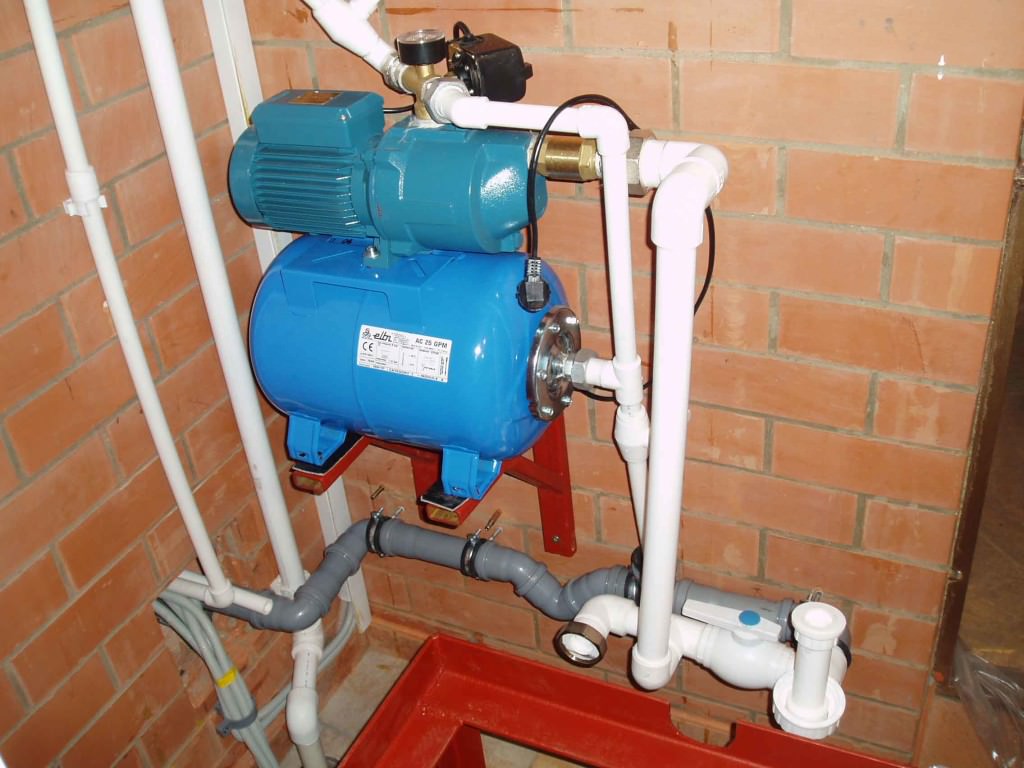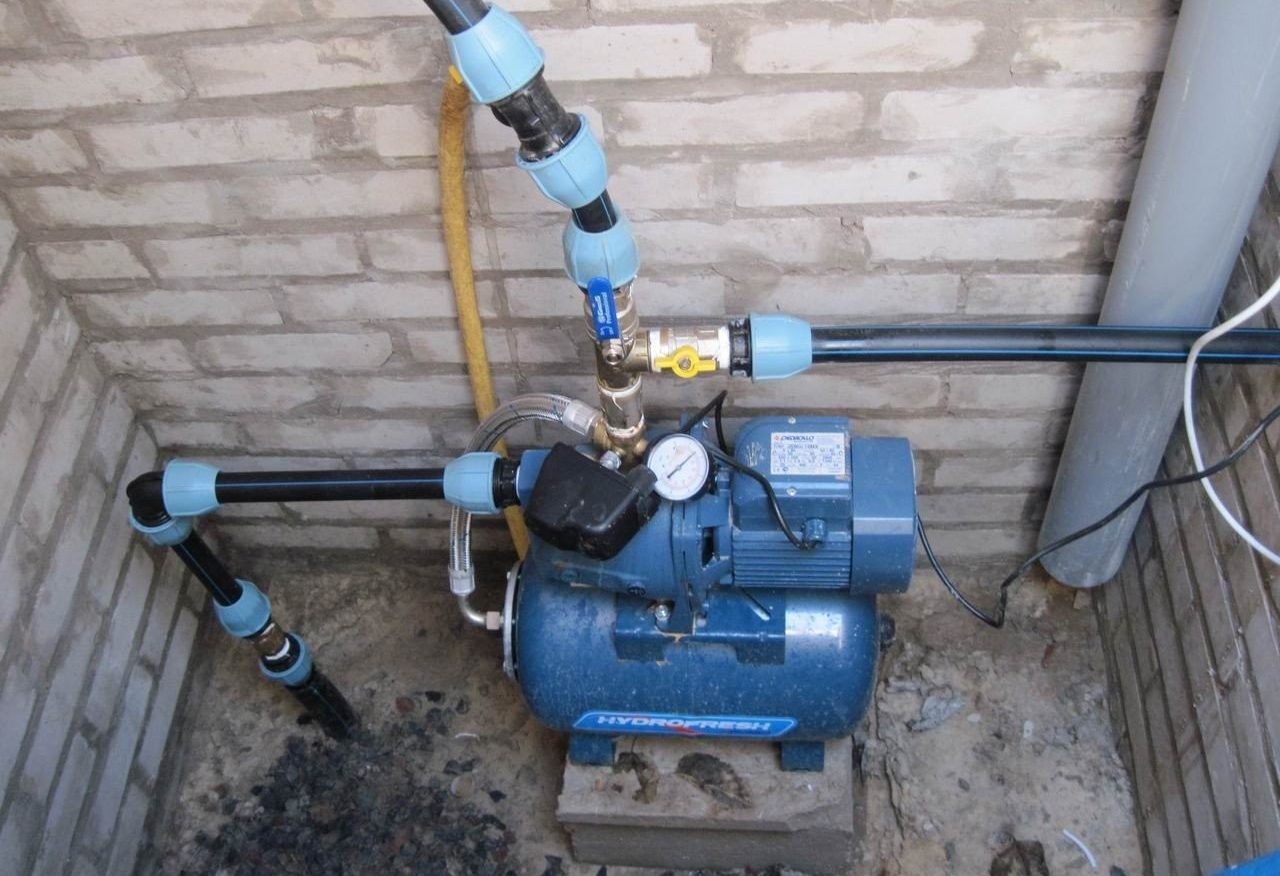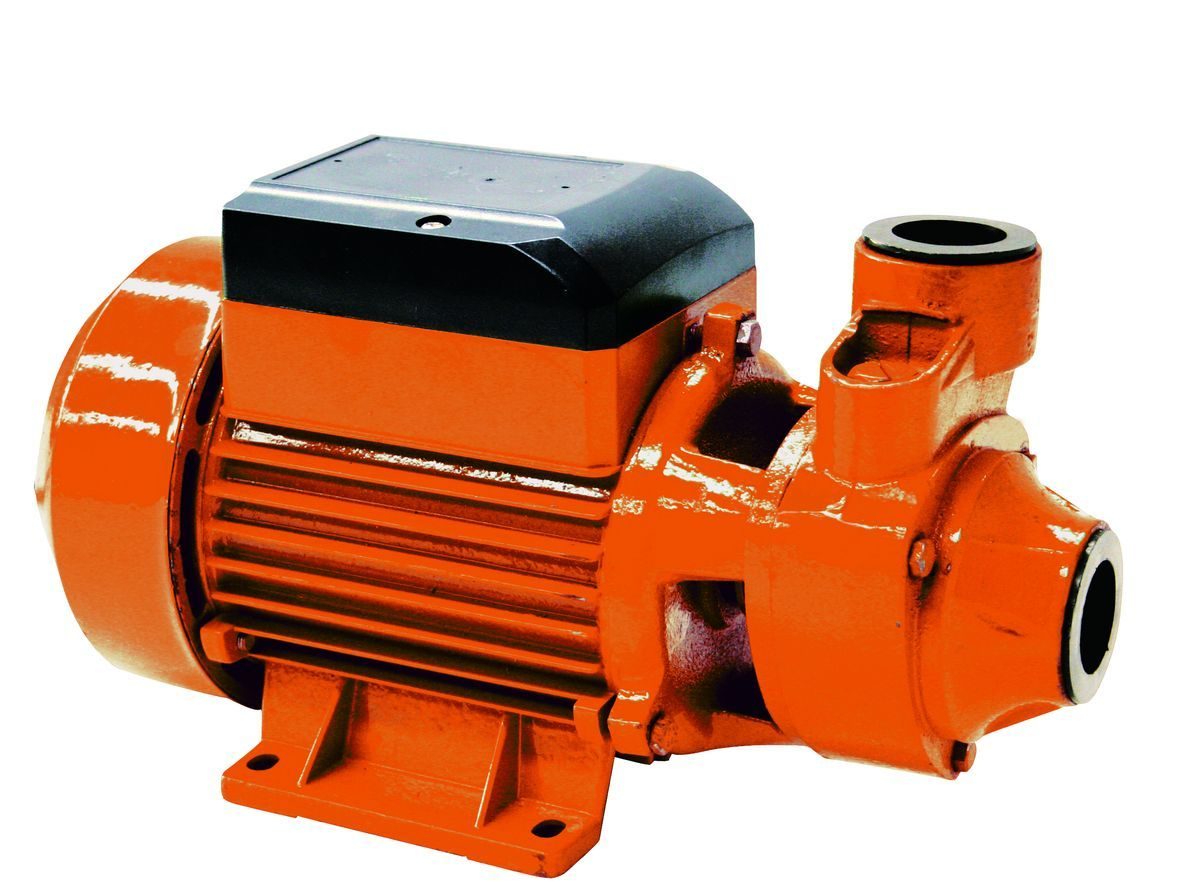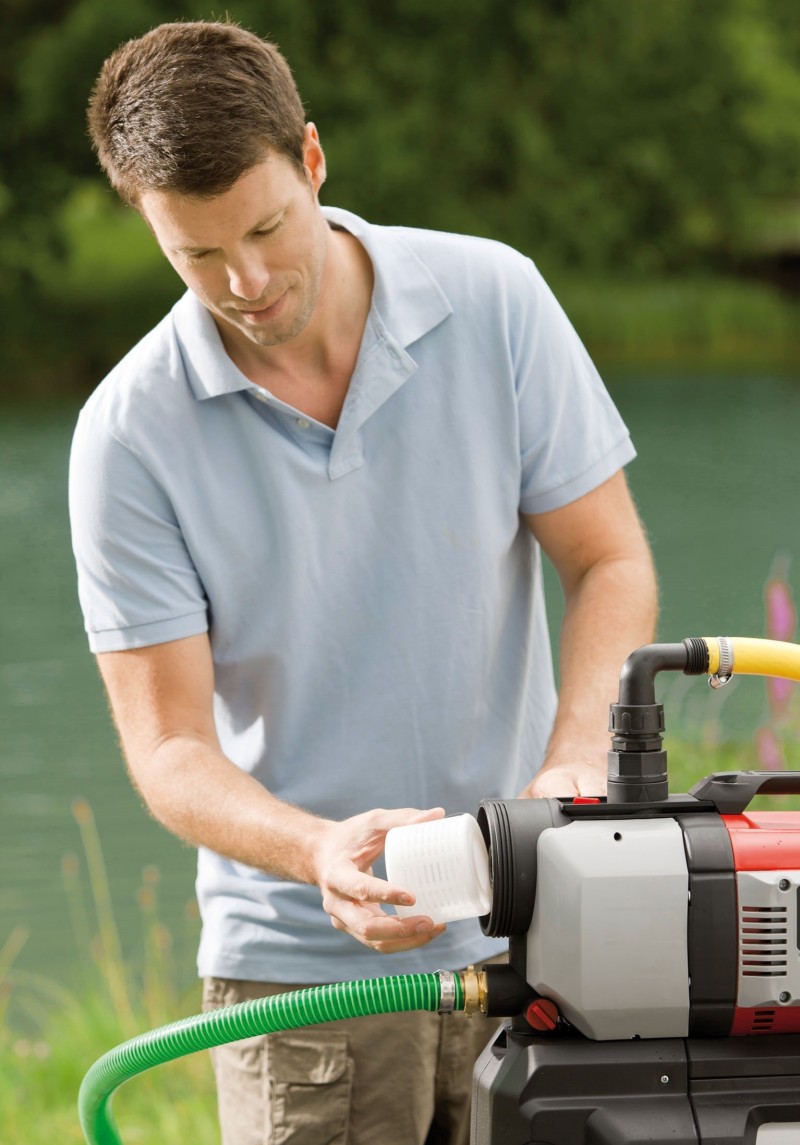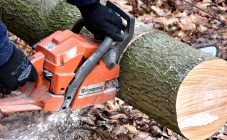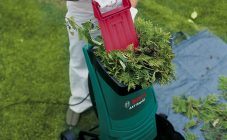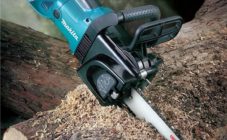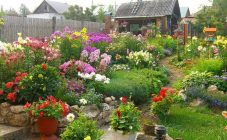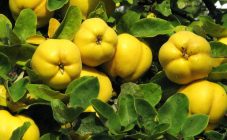Content:
The presence of all the benefits of civilization in a summer cottage is the dream of any summer resident. An individual water well is a big step towards its implementation. But in order to fully enjoy the autonomous water supply, only one little is missing - the automation of the water supply process. In other words, you need a pumping station for giving. About what it is, what varieties and schemes, what to look for when choosing, and will be discussed in this article.
Types of pumping stations
In systems that provide water from a well or a deep well, industrial or domestic pumping stations are used. There is no need for industrial equipment for a summer cottage, so this type can be ignored. Household installation includes:
- Hydroaccumulator - a container for storing water.
- A device that measures the pressure in the system (manometer)
- Pressure regulating device (relay-regulator)
- A pump is a device that sets a water mass in motion through water pipes.
When choosing a household unit, you need to pay attention to the following parameters:
- Depth of occurrence. Moreover, it is necessary to take into account the strength of the aquifer, because if there is little water, then there is a high probability that the mirror will go lower and the pump will stop pumping water. And this can lead to its failure.
- Pump type and characteristics
- The volume of the accumulator and the material from which it is made. The material itself practically does not affect the performance, however, the service life may depend on this. In addition, no one is insured against accidental damage. And, if the station does not have its own "secluded" place, it is better if the container for water is not made of plastic. It is better to choose a metal tank.
- Built-in additional options (additional sensors that make the device more secure)
- Kit price. There will be no specific numbers in the article - you need to find out immediately before buying. The price of water pumps for summer cottages can vary for many reasons, including depending on the season.
Types of pumps installed at pumping stations
The main element of the automatic water supply device is the pump. It is he who is responsible for delivering liquid to the point of consumption. Therefore, you need to understand in more detail the types of pumps used and their technical characteristics. By location relative to the source, they are divided into:
- Surface
- Submersible (deep)
Surface pumps are centrifugal single-stage or multistage, as well as self-priming with an ejector (built-in or remote). Plants with a single stage unit are the most inexpensive. But they are also the least functional, since they can raise water from a depth of no more than 7 meters. In addition, when they are started, they need to fill the entire system with water and they make a lot of noise during operation.If such a station is installed directly in the house, then it will create tangible discomfort. However, as a pump for a 200 liter barrel for irrigation of beds - in principle, an ideal option.
Multistage circulation pumps work much quieter, they can raise water from a slightly greater depth. Such units are quite suitable for a summer resident who has a shallow well (9-12 meters). These installations do not cause as much inconvenience as single-stage ones and they can be easily installed right in the house.
The most productive - ejector - both quiet and powerful (depth - up to 45 meters). They can work both at a distant distance from the well and at a distance from home. As a rule, manual intervention in their work is not required. And it could be an ideal choice if it were not for the complexity of service, "capriciousness" and price. It makes no sense to install such pumps, in addition, there are pumps that have a different principle of operation - they are located directly in a well or a well and from there they supply water to a hydraulic accumulator.
This type includes vibratory and screw (deep) units. Vibrating - they are not lowered into the wells, due to the specifics of their work, although these "kids" may well raise the water column to a height of 15 meters. Usually, such a pump is used for irrigation from a barrel or other container in the garden. Such "barrel" pumps are inexpensive, but their resource is extremely small - because of constant vibration, they fail very quickly.
Deep (borehole) wells work well at considerable depths, even in artesian wells with a depth of 100 meters. The performance is impressive - there is enough pump even for a pond in the country.
How to choose a station
When choosing a station, it is necessary to take into account the technical conditions, that is, the depth of the aquifer. It is necessary to clearly calculate the amount of water consumed:
- The number of people living. It is generally accepted that 60 liters is enough for a family of four.
- Using a pump for irrigation. And how it will be used - for a barrel set or for watering with a flowing stream.
- For other needs. It is possible that the summer resident wants to build a small decorative fountain, for example.
Having made such a calculation, you need to multiply the resulting number by 20% (hydro loss, plus a power reserve) - this will be the required capacity of the pumping station. A complete analysis is carried out according to the following algorithm:
- Installation power. As a rule, an electric pump with a capacity of 0.3-08 kW is enough for a summer residence. And even for a large mansion, a unit over 1.5 kW is not required.
- Performance. The manufacturer indicates the supplied volume (m³ / hour, sometimes l / min) and pressure, that is, the height to which the pump can raise water (in atmospheres or meters)
- The volume of the accumulator, that is, the water supply. The larger the capacity, the less often the pump will turn on.
Complete stations with surface pump
Today you can buy a ready-made station for a very reasonable price. Of the modifications of surface pumps for water offered in stores for a summer residence, you can choose exactly what a summer resident needs.
The leading positions are occupied by German technology. The brands Karcher, Gardena, Metabo are widely known among our summer residents. "Gardena", by the way, has a completely democratic price. "Karcher" - has long been famous for its installations that work not only in the field of domestic water supply.
Italian manufacturers are equally popular. Model "Marina" CAM 40/22 HL is very popular. With excellent performance characteristics, it is also equipped with a built-in pressure gauge for monitoring water pressure, dry running and overload protection. The presence of such automation allows the stations to be pumped without shutting down for quite a long time.
Russian manufacturers also offer high-quality, competitive products.Here is a small list of products that have proven themselves as reliable, trouble-free units (they are listed in the list not by rating, but in any form):
- "Caliber" SVD 160 or 310. A miniature station with very small hydraulic tanks (1.5 and 2 liters). However, the productivity is 1.8m³ / h, which is quite enough for irrigation in a country garden. It is bought most often by those who do not live in the country all the time, but come in the summer for the weekend.
- "Caliber" SVD 650. A unit capable of producing 2.5-3.5 m³ / h of water, raising it by 35 meters, that is, the head is almost 4 atmospheres.
- Jilex Jumbo 50/28. Will perfectly cope with the rise of water from a depth of 9 meters. The capacity of 3m³ / h makes it a universal pump for summer cottages - it can work as an irrigation pump while pumping water for the house.
- Zubr ZNAS 800. An excellent domestic pump with a 5-year warranty. It has excellent performance indicators, 20 liters accumulator capacity and built-in thermal protection, which is triggered when the device overheats.
- "Aquarebot" JS 60. This unit is probably the best among domestic products. Its capacity is quite enough for the constant supply of water to a residential building, as well as as a regular garden surface pump. In addition, the device is equipped with several stages of protection: from overheating, dry running, auto-shutdown in case of voltage drops in the power supply.
We should also mention the products of Chinese manufacturers. Among the cheap, low-quality products of the Middle Kingdom, there are very good units. These include the Patriot PW 850 installation, which has a circulation installation of American origin.
Choosing a place to install a pumping station
There are three options for station placement:
- Close to a water source;
- In the House;
- In the utility room.
If you mount the station near the well (provided that it is located on the street, and not in the cellar), then you will have to make sure that it does not freeze during the cold season. For this, a special insulated chamber is being built, called a caisson.
If the unit will be located in the house, then the model with the lowest noise levels should be chosen. At the same time, its performance indicators should not suffer. Most likely, this technique will cost a little more than its “noisy” counterparts. But comfort comes at a price.
It is best to connect the station in the basement of the house - there the temperature is also comfortable, and the noise from its operation is not so audible, and it is not difficult to get there for adjustment.
In any case, wherever there is a device for pumping water, it is necessary to take care of the main pipes. To prevent freezing of the water supply system in the winter season, the highway must be secured. For this, pipes are laid in a ditch, the depth of which is greater than the depth of freezing of the soil. In those regions where this value is significant and it is not possible to dig such a trench without the involvement of special equipment, the highway must at least be thoroughly insulated. After frozen water tears metal, and plastic - even more so. And it will be very unpleasant if at the height of winter the house is left without water supply.
Summing up, we can say that today it is quite possible to provide a country house with a water supply system. Home appliance stores offer the widest range of pumping stations with a wide range of performance and power indicators. The choice is offered both budget options from little-known manufacturers, and branded products with a price sometimes not justifiably high.In terms of functionality, everyone can also find what they like - from the simplest with one pressure gauge to almost completely automated with several degrees of protection against overheating, dry operation, and much more.
Do-it-yourself installation of such installations is not difficult. Usually, these are simple fitting connections, the connection of which is clearly spelled out in the assembly instructions. The only caveat is that not all stations are equipped with fine water filters. Although, most of them have pumping units designed to work with a pure liquid. If you ignore this moment, you can get a non-warranty case of failure of the unit. Better to spend money and install a filter element in the water supply system. In addition, this will save not only the pump, but also the summer resident himself.
